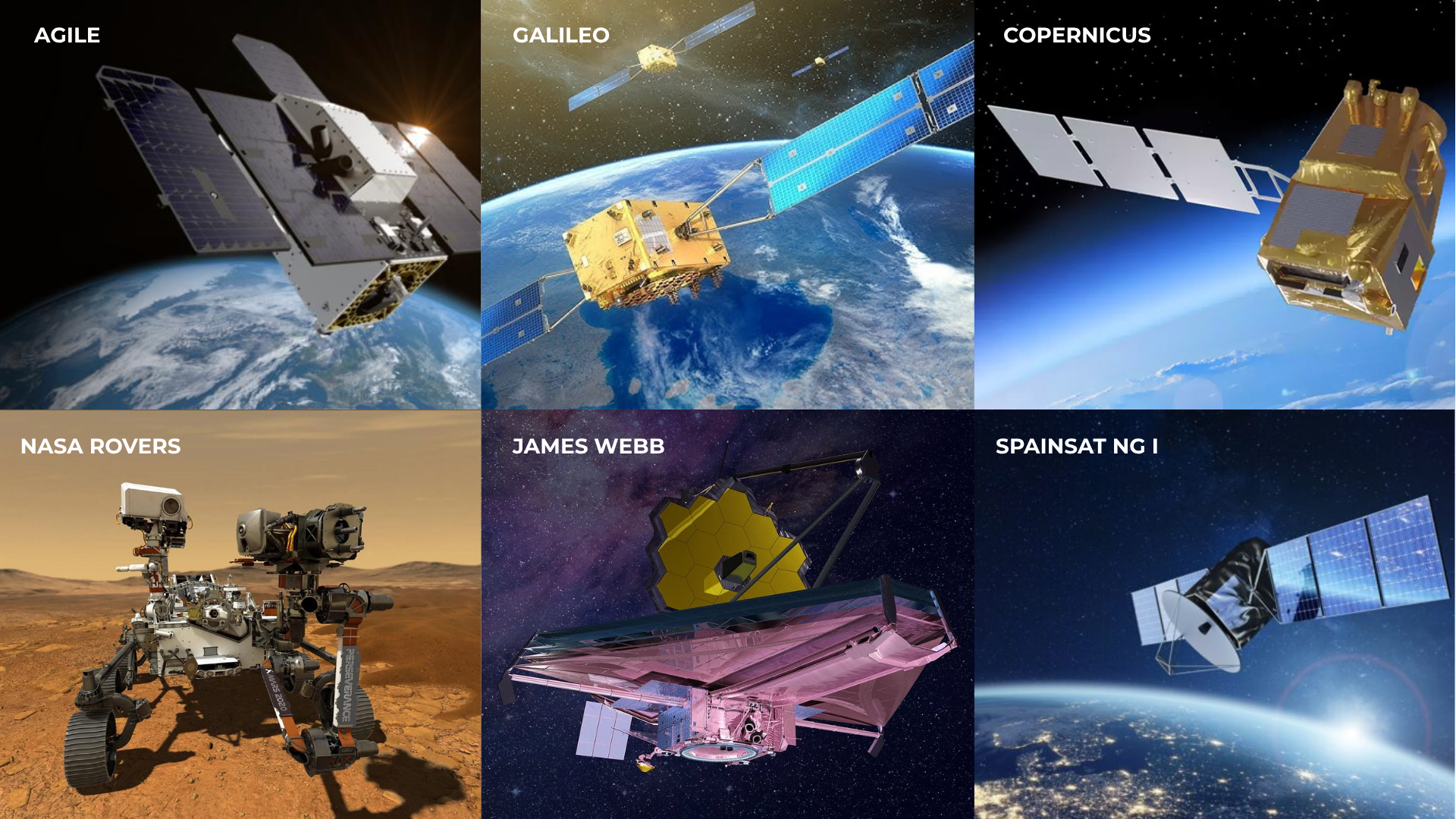- Sectors
- Aerospace & Defense
- Big science
- Fintech
- Insights

ARQUIMEA’s presence and involvement in some of the most significant national and international space missions have solidified its position as a key player in the space sector. Since its first participation in 2007, ARQUIMEA has expanded its technological portfolio to become a benchmark in thermal systems, microelectronics, and mechanisms for space applications.
This journey is part of ARQUIMEA’s legacy in space—a trajectory built on innovation and technology.
The AGILE mission, launched in April 2007 and operated by the Italian Space Agency, marked a turning point. It was ARQUIMEA’s first participation in a space mission, contributing with the design and manufacturing of thermal blankets essential for observing gamma-ray sources and terrestrial phenomena. This experience marked the starting point for the development of thermal technologies that have since evolved into complex systems such as thermo-structural panels and deployable radiators for space applications.
ARQUIMEA’s involvement in the GALILEO project represented a major step forward in establishing itself as a leader in space thermal systems. GALILEO, the European Union’s global navigation satellite system, required robust and highly efficient solutions to ensure thermal stability of its satellites. ARQUIMEA provided radiators, heat pipes, and Secondary Loop Interfaces (SLIs), enabling heat dissipation and ensuring operational reliability of the satellites throughout their lifespan.
Copernicus, the world’s largest Earth observation program, led by the European Union, has seen active participation from ARQUIMEA in 19 missions. The company has delivered thermal and structural solutions for nearly 20 satellites and instruments, including Sentinel-1C and Sentinel-6. Contributions such as thermal structures, over 250 heat pipes, thermal subsystems, and HDRM (Hold-Down and Release Mechanisms) have been key in maintaining observation equipment in optimal conditions. Thanks to these contributions, the satellites currently monitoring global climate phenomena and sea level can operate continuously.
ARQUIMEA has also left its mark on Mars, participating in NASA missions such as Mars Science Laboratory (Curiosity, launched in 2011) and Mars 2020 (Perseverance, launched in 2020). The company supplied payload hold-down and release mechanisms (HDRM), essential for accurately deploying scientific instruments aboard the rovers. These systems have facilitated the collection of key data on the geology and climate of the Red Planet.
The James Webb Space Telescope (JWST), launched in December 2021, is one of the most ambitious astronomical missions to date. ARQUIMEA contributed to the development of the thermal system for the NIRSpec instrument, by manufacturing single-layer cryogenic blankets essential for its operation in the infrared spectrum. These solutions supported the mission’s goal of deepening our understanding of the evolution of the universe and the origins of galaxies.
The SpainSat Next Generation (NG) program is key to ensuring secure defense communications for Spain and its allies. In this program, ARQUIMEA developed the thermal control system for active antennas, as well as the digital and analog microchips that compose them. The launch of the first satellite in January 2025 marks a milestone for the national space industry and strengthens ARQUIMEA’s position as a leading provider of critical technologies for space missions.
Between 1993 and 2007, Ecliptic Enterprises Corporation (now part of the ARQUIMEA Group) participated in numerous space missions, standing out for its video capture systems aboard spacecraft. Its RocketCam product was integrated into launchers and satellites, providing real-time footage of launches, separations, and deployments. It collaborated with agencies such as NASA and aerospace contractors, improving visual monitoring of scientific, commercial, and technology demonstration missions.
From the first thermal blanket in AGILE to the development of microelectronics and thermal systems for telescopes, satellites, and rovers, ARQUIMEA has built a solid trajectory in the space sector. To date, it has participated in over 180 space missions and collaborated with agencies such as NASA, ESA, and the European Commission. Innovation, adaptability, and a commitment to technological excellence are part of ARQUIMEA’s DNA, making it an indispensable player in major space missions.
This journey represents not only a technological legacy but also a forward-looking commitment to space, science, and excellence.